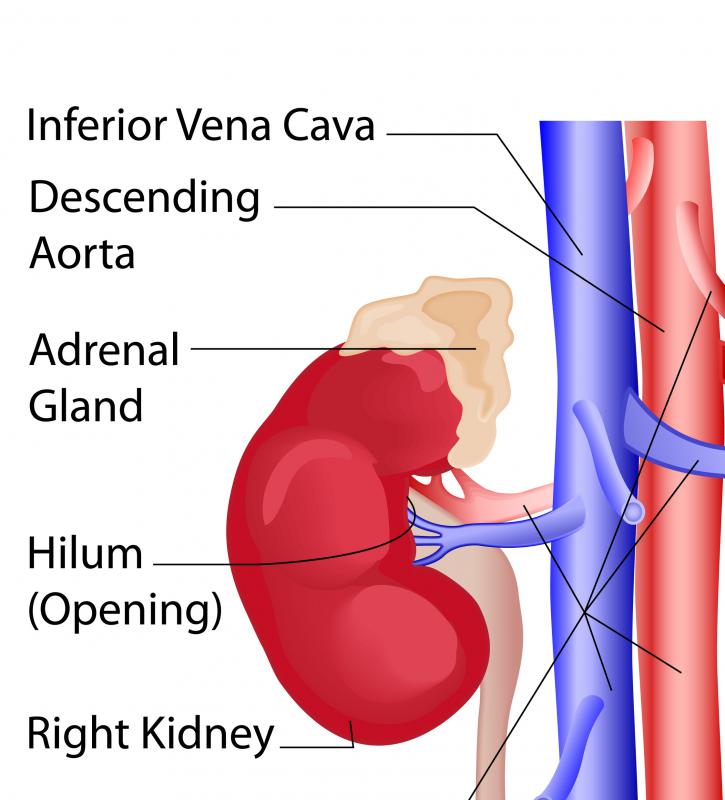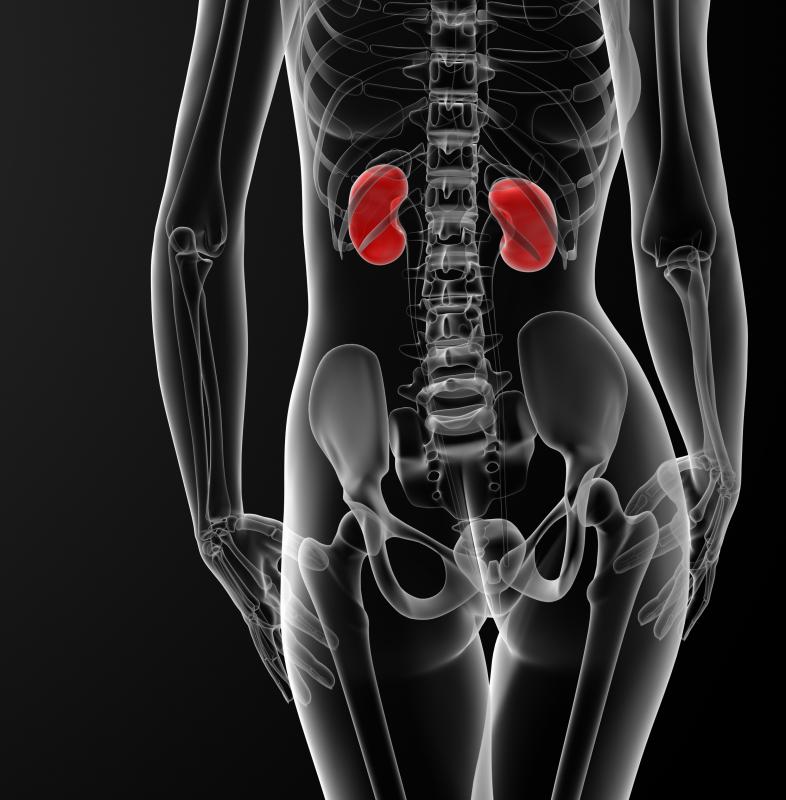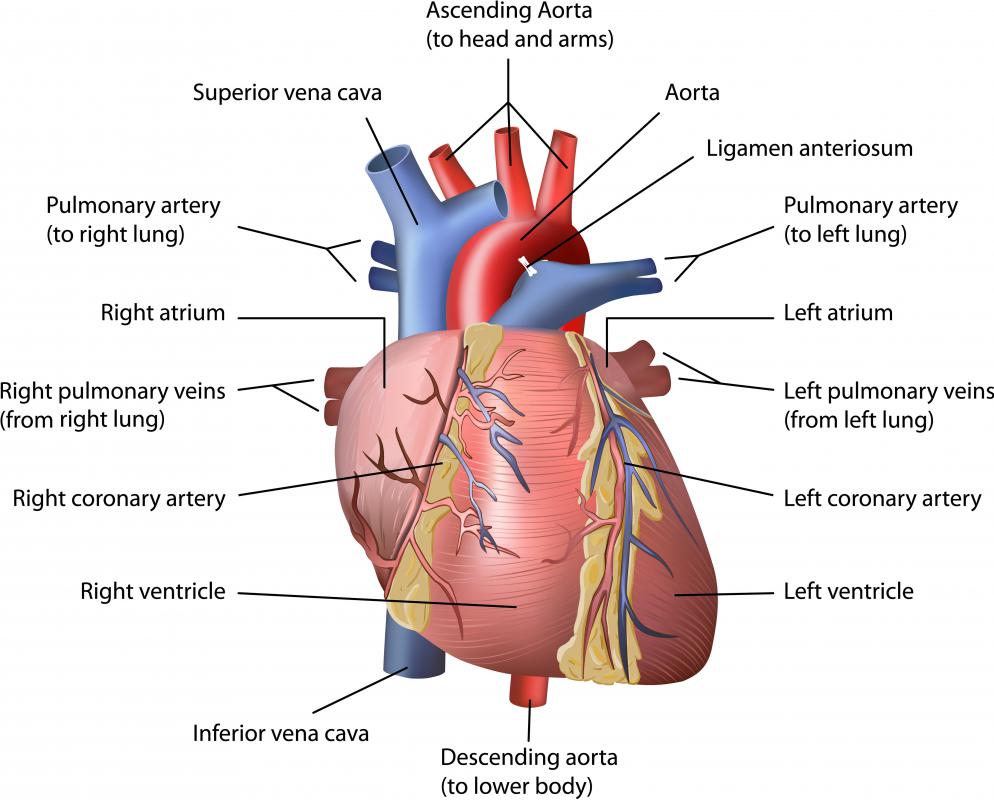At TheHealthBoard, we're committed to delivering accurate, trustworthy information. Our expert-authored content is rigorously fact-checked and sourced from credible authorities. Discover how we uphold the highest standards in providing you with reliable knowledge.
What Is an Arcuate Artery?
An arcuate artery is one that is bent or curved, and the term can refer to the arcuate arteries of the foot, kidney, or uterus. The foot's arcuate artery supplies the foot and toes with blood. The kidney's arcuate arteries are part of the kidney's blood supply and run approximately parallel to the kidney's surface. The arcuate vessels of the uterus, which are both arteries and veins, are part of the blood supply to the uterus.
The arcuate arteries of the kidney are known as the vessels of renal circulation, which refers to the renal, or kidney's, blood supply. Receiving approximately twenty percent of the heart's blood output, the renal circulation branches away from the abdominal aorta and returns de-oxygenated blood via the ascending, or inferior, vena cava. The superior and inferior vena cava, which together are called the venae cavae, are veins that carry blood into the heart via the right atrium. The abdominal aorta is part of the body's largest artery, the aorta, and is the largest artery in the abdominal cavity. It's a direct continuation of the descending aorta, which is, itself, a direct continuation of the aorta.

The right and left renal arteries branch away from the abdominal aorta. Blood enters the kidneys via the renal arteries, which then split into smaller branches called the arcuate arterioles, or arcuate arteries. The arcuate artery of each kidney is located at the border of the renal cortex and the renal medulla. The renal cortex is the outer portion of the kidney, and the renal medulla is the innermost portion.

The arcuate vessels of the uterus, or womb, are part of the uterine blood supply. They are also known as the helicine branches of the uterus and the helicine arterioles because of their spiral shape. The uterine arcuate vessels are the veins and arteries that branch away from the uterine veins and arteries, and connect with the ovarian veins and arteries.

The dorsalis pedis artery travels down the front of the ankle where the ankle bones meet the top of the foot. The lateral tarsal artery is a branch of the dorsal tarsal artery and extends from the front to the outside of the ankle. The arcuate artery of the foot, which is also known as the metatarsal artery, arises in front of the lateral tarsal artery. It travels sideways across the bottoms of the metatarsal bones, which are the long slim bones in the middle of the foot. The arcuate artery of the foot gives rise to the second, third, and fourth dorsal metatarsal arteries.
AS FEATURED ON:
AS FEATURED ON:

















Discuss this Article
Post your comments